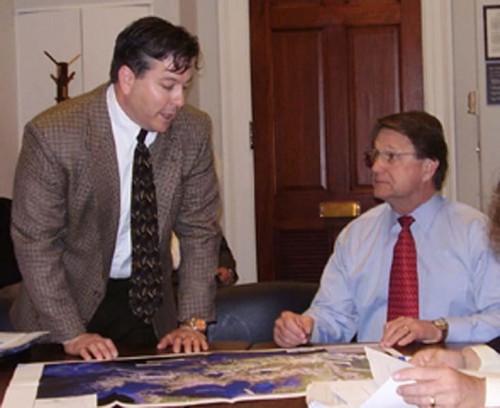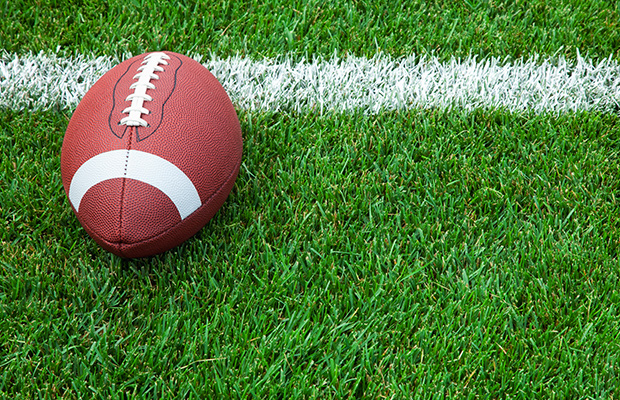
Morganza to the Gulf on Six on Your Side
August 20, 2007Primary care doc shortage epidemic
August 22, 2007Other than the legendary Archie Manning, no New Orleans Saints’ quarterback has captured the hearts of fans like South Lafourche’s favorite son, Bobby Hebert. The SportsNet caught up with the founding father of the “Who Dat Nation” at Saints training camp to find out what makes the man known as the “Cajun Cannon.”
SportsNet: Did you always want to play quarterback?
Bobby Hebert: No, I was a late bloomer. In ninth grade, I was only 5-foot-8 inches and 150 pounds. By the time I was 17, I was 6-foot-2 inches and weighed 190. So I played defensive back for South Lafourche until my senior year.
SN: Was it hard to go from defensive back to playing quarterback in just one year?
BH: No. We (South Lafourche) were a running team. When I played quarterback we only threw the ball 10 times a game. Coach Ralph Perry was like, “If we can’t get three yards a run, then we suck.” We figured if we had the ball for most of the game then the other team couldn’t score. I remember when we played Bogalusa and kept the ball for a whole quarter. It was a 14-play, 80-yard drive. Bogalusa was faster than us but their offense was never on the field. We just ran all over them. It worked – we won the State Championship in 1977.
SN: South Lafourche was a state powerhouse back in the 1970s. Why?
BH: South Lafourche was fantastic before the oil crash of 1982. The first year South Lafourche ever fielded a football team, they went and lost the 1967 State Championship game. Four years later we won the 1971 State Championship and then again in 1977. So, in a span of six years, South Lafourche had played in the State Championship game three times.
No one believes me, but on my street – East 39th Street – we had five kids that got college football scholarships. Tyrone Gauzier went to Memphis State and could run 100 yards in 9.8 seconds. He was the fastest white boy I’ve ever seen. His brother Dwayne, who was the starting quarterback for the 1971 championship team, played at LSU. Another guy was Lynn Bichurch, who was elected to the Nicholls’ State Hall of Fame as an offensive lineman. And my younger brother Billy Hebert went to Nicholls and played in the Canadian Football League for the Calvary Stampeders.
We had some awesome pick-up games in my neighborhood. And the fans back then were terrific. On Friday nights, everyone went to the games. It was a way of life.
SN: So how did you end up getting a scholarship to Northwestern State?
BH: Coach Dale Williams, who coached Terry Bradshaw in high school, saw the raw talent that I had and wanted me to play for the Demons.
Northwestern’s offense was more sophisticated than LSU’s; we were running the Buffalo Bills offense under coach Joe Ferguson. He’s the one who taught me about three-, five-, and seven-step drops. He really taught me how to play the position. It was all about being at the right place at the right time.
Plus, we had four players from that team that played and starred in the NFL; myself, wide receiver Marc Duper, linebacker Gary Reasons, and running back Joe Delaney. Joe was Rookie of the Year with the Kansas City Chiefs. Unfortunately, he drowned (June 29, 1983, trying to save three youngsters) before he really got started. Northwestern, still to this day, is the best 1-AA University at recruiting some of the top football talent in and around Louisiana. [Northwestern State has] proved time and time again that you don’t have to go to LSU to have a pro-football career. Louisiana is one of the top states with professional football players per capita.
SN: When did you realize you had what it took to play professional football?
BH: It was in 1980, when I made second-team All American. I got letters from the Cincinnati Bengels and the Dallas Cowboys.
SN: Why did you choose the USFL over the NFL?
BH: It was all about the money. I had a wife and child. I needed to make a living. The USFL guaranteed me $250,000; it was like going from rags to riches. Jim Kelly did the same thing. So when an NFL player says ‘It’s not about the money” – it’s about the money.
My rookie year with the Michigan Panthers, we won the Championship and I was award MVP of the League. Once again, I was in the right place at the right time. The USFL gave me great exposure and helped me break into the NFL. Had I entered the draft after my senior year, I would have been in the same quarterback class as Dan Marino, John Elway, Jim Kelly, and Tony Eason. Seven of us started 10 years or more in the NFL. Only Ken O’Brien and myself came from small schools.
SN: What was it like being from Louisiana, playing for the Saints?
BH: I was a Packers and Dolphin fan growing up. The Saints were terrible back then. When the USFL folded, I was actually going to Seattle, but Gov. [Edwin] Edwards called me and said there were no Cajuns in Seattle, so I better get my butt back to Louisiana and play for the Saints. Tom Benson had just bought the team. I knew I would be a goat or hero, but I thought it was a privilege and we went to the playoffs for the first time in team history in 1987.
SN: Your hold-out year, did you mind that Reggie White got the credit for modern-day free agency?
BH: I liked Reggie, but I take all the credit. It’s called the ‘Reggie White Case’ because he was a bigger name than Bobby Hebert. It was my testimony that made his case winnable. How could the Saints and Jim Finks own me if I didn’t have a contract? I felt it was un-American and un-capitalistic. Archie Manning told both of his sons to thank me for the kind of money that they are making today.
SN: When did you know you were a ‘star’?
BH: I knew I had made the ‘big time’ in 1991. I won NFL Comeback Player of the Year and Vanna White was the presenter. My grandfather, Landry Galliano, was such a huge ‘Wheel of Fortune fan.’ He was amazed that I knew Vanna White. To him, that was bigger than any touchdown pass I’d thrown or any game I had ever played.
The ‘Seinfeld’ ‘Big Salad’ episode was another cool moment, with George discussing my name. I guess I’ll be on TVLand one day.
With his NFL playing days behind him, Hebert faces new challenges dealing with Saints fans as co-host of “Sports Talk” on 870-AM WWL Radio and “Countdown to Kick-Off.” He is also looking forward to watching his son, T-Bob, play center for LSU.
As for what the future holds for “The Cajun Cannon,” in his words, “Who knows…”
By the Numbers:
1977 – Year he led the Tarpons to a Louisiana 4A title
2 – Number of NFL teams Hebert played for (New Orleans Saints and Atlanta Falcons)
88 – Episode of “Seinfeld” where George mentions how much he likes to pronounce “Hebert”










